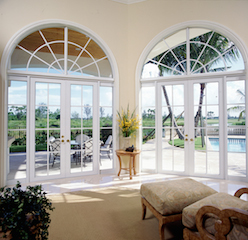
Features
Codes and standards
AAMA releases anodic finishes/painted aluminum document
February 13, 2015 By AAMA
 Feb. 13, 2015 – The American Architectural Manufacturers Association (AAMA) has released an updated document laying out the anodizing process with reference to architectural work. According to AAMA, this standard describes the anodizing process, which produces a coating that is thicker than nature's version, harder and very durable.
Feb. 13, 2015 – The American Architectural Manufacturers Association (AAMA) has released an updated document laying out the anodizing process with reference to architectural work. According to AAMA, this standard describes the anodizing process, which produces a coating that is thicker than nature's version, harder and very durable.
The AAMA Anodic Finishes/Painted Aluminum (AFPA) document has been updated to reflect newer technologies now available for the process involved.
The appearance and physical properties of anodic finishes are discussed as governed by three factors, which are aluminum alloy and temper, surface treatment prior to anodizing and the type of electrolyte and operating techniques used in the anodizing process.
“AAMA AFPA-1 was a retired AAMA document,” says Andy Joswiak (Apogee Enterprises/Linetec), chair of the AMC Anodic Finishes/Painted Aluminum Task Group. “When the AAMA document CW-10 [Care and Handling of Architectural Aluminum from Shop to Site] was recently updated, it was decided to be streamlined by removing information that was not relevant to that specification. That information was important and was only available in the CW-10 specification.”
Joswiak says it was then decided to bring the AAMA AFPA reference document out of retirement and update it to include the important information removed from AAMA CW-10.
“It took a lot of hard work by many, but ultimately, AAMA has provided an excellent reference document that gives users and specifiers expert information on paint and anodized finishes for aluminum building components,” says Joswiak.
Carl Troiano (Trojan Powder Coatings), vice chair of the AMC Anodic Finishes/Painted Aluminum Task Group, adds that the document also was updated based upon current technology and processes. “There were certain finishes that were outdated and not used in the current architectural specifications,” says Troiano. “There were tests and procedures that needed to be verified or modified along with clarifying and identifying the specifications. This revision streamlined the current specification.”
AAMA AFPA 1-15, along with other AAMA documents, may be purchased from AAMA’s Publication Store.
For more information
www.aamanet.org
Print this page
Leave a Reply